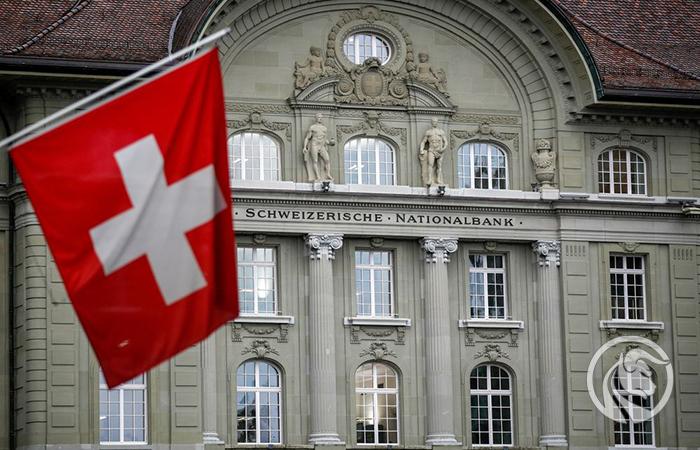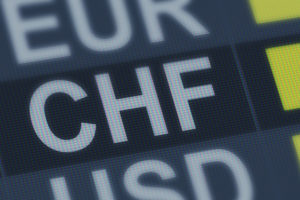Swiss National Bank - Swiss National Bank (SNB)
The Swiss National Bank (SNB - Swiss National Bank) is the central bank of this Alpine country. As in the case of other state entities, it functions in a manner similar to National Bank of Poland. Its tasks, as well as the specific nature of its operation, are given in Article 99 of the Federal Constitution of Switzerland. The state attaches great importance to this source of law, which is why the activities of the SNB are very much related to taking care of the country's economic and economic development. The Swiss National Bank was founded in 1907 with two headquarters - in Bernie and Zurich. The bank also has six representative offices: in Basel, Geneva, Lausanne, Lucerne, Lugano and St. Gallen.
A brief history of the Swiss Bank
The Swiss Central Bank was founded in 1907. The main motive of its creation was the emergence of the need to limit the number of issuing banks operating in Switzerland. These rights have almost until now (after 1826 year) 53 entities. A hard task with such a number of issuers on the market was the ongoing control of the money produced. Only the introduction of changes in the Federal Constitution of the State (in 1874 year) it brought the expected results. Thanks to this, the rights to issue banknotes fell to only one institution.
Another significant changes came in the 1891 year. During this time, emission rights were transferred to the Swiss Confederation. The National Bank of Switzerland (in a form very close to today) was created on January 16 1906. However, the actual activity began almost a year and a half later - 20 June 1907 year. Until now, the beginning of the bank's operations is a contentious issue. In most sources, we can see the dating of its origins on 1907.
During World War I, the bank interacted with the Swiss authorities more. He was assigned tasks for issuing low-value Treasury bills.
Schweizerische National Bank in 1994, it was transformed into a joint-stock company. Its activity and functioning was entrusted to the Confederation. At that time, SNB had 28 branches and branches in individual cantons. The bank became independent only in May of the 2004 year. Quite recently, because from the year 2015 Swiss National Bank is privately owned. Majority of the package is held with majority cantons and banks of these cantons. A much smaller share is in the hands of private investors.
Tasks and goals of the SNB
The basic task of the National Bank of Switzerland (as in the case of all central banks) is the issue of money. Of course, here Swiss franc (CHF). SNB is also responsible for the management of foreign reserves. Their creation and active management of funds accumulated there is aimed at preventing crises and allowing for possible intervention to prevent it. Large reserves have a significant impact on security policy and confidence in this currency. The next task of the bank is to provide payment services, including mainly non-cash transactions between banks operating in Switzerland. The Swiss Interbank Clearing System (SIC), which allows their implementation, works through SNB deposit accounts.
The Bank also deals with accepting payments and handling the expenses of the Swiss government. This work includes, among others, registration of debts and bonds, storage of securities and full servicing of the money market together with currency transactions. In addition, Switzerland itself actively participates in international cooperation.
Bodies of the Swiss Bank
Due to the fact that SNB is a joint-stock company, one of the decision-making bodies in it is the General Meeting of Shareholders. The Swiss National Bank has a public mandate. Shareholders' meetings are not as high (in decision-making matters) as in the case of standard joint-stock companies.
Bank's Council is the second authority in the bank. Its task is to control and supervise the operation of the Swiss National Bank. Its main purpose is to monitor the activities of this entity on an ongoing basis. It includes 11 members. Six members, including the President and Vice-President, are appointed by the Federal Council. The other (five) are appointed by the General Meeting of Shareholders. The Swiss Bank Board consists of exactly four committees: audit, risk, remuneration and nomination. They are to improve the bank's operations in every segment.
The third body and the last body of the bank is the Management Board of the Swiss National Bank. The Management Board is responsible for the executive authority of the SNB. He is responsible for the Swiss monetary policy. In addition, it plays a key role in determining the strategy of asset management, which strictly translates into the stability of the financial system. The Management Board consists of three members: the President, the Vice-President and a member. Currently, the President of SBN is Thomas Jordan.























![Forex Club – Tax 9 – Settle tax on a foreign broker [Download the Application] Forex Club - Tax 9](https://forexclub.pl/wp-content/uploads/2024/02/Forex-Club-Podatek-9-184x120.jpg?v=1709046278)
![Trading View platform – solutions tailored to the needs of traders [Review] trading view review](https://forexclub.pl/wp-content/uploads/2024/03/trading-view-recenzja-184x120.jpg?v=1709558918)
![How to invest in ChatGPT and AI? Stocks and ETFs [Guide] how to invest in chatgpt and artificial intelligence](https://forexclub.pl/wp-content/uploads/2023/02/jak-inwestowac-w-chatgpt-i-sztuczna-inteligencje-184x120.jpg?v=1676364263)


![Izabela Górecka – “Success on the market depends not only on knowledge, but also on emotional stability” [Interview] Izabela Górecka - interview](https://forexclub.pl/wp-content/uploads/2024/04/Izabela-Gorecka-wywiad-184x120.jpg?v=1713870578)
![WeWork – the anatomy of the collapse of a company valued at $47 billion [WeWork, part II] wework bankruptcy story](https://forexclub.pl/wp-content/uploads/2024/04/wework-bankructwo-historia-184x120.jpg?v=1711729561)
![Adam Neumann – the man who screwed up Softbank [WeWork, part AND] adam neumann wework](https://forexclub.pl/wp-content/uploads/2024/04/adam-neumann-wework-184x120.jpg?v=1711728724)





![How to transfer shares to another brokerage office [Procedure description] how to transfer shares to another brokerage house](https://forexclub.pl/wp-content/uploads/2024/03/jak-przeniesc-akcje-do-innego-biura-maklerskiego-184x120.jpg?v=1709556924)
![The most common mistakes of a beginner trader - Mr Yogi [VIDEO] Scalping - The most common mistakes of a beginner trader - VIDEO](https://forexclub.pl/wp-content/uploads/2024/03/Scalping-Najczestsze-bledy-poczatkujacego-tradera-VIDEO-184x120.jpg?v=1711601376)
![Learning patience: No position is also a position - Mr Yogi [VIDEO] Scalping - Learning patience - No position is also a position - VIDEO](https://forexclub.pl/wp-content/uploads/2024/03/Scalping-Nauka-cierpliwosci-Brak-pozycji-to-tez-pozycja-VIDEO-184x120.jpg?v=1710999249)
![When to exit a position and how to minimize losses - Mr Yogi [VIDEO] Scalping - When to exit a position and how to minimize losses - VIDEO](https://forexclub.pl/wp-content/uploads/2024/03/Scalping-Kiedy-wyjsc-z-pozycji-i-jak-minimalizowac-straty-VIDEO-184x120.jpg?v=1710336731)


















